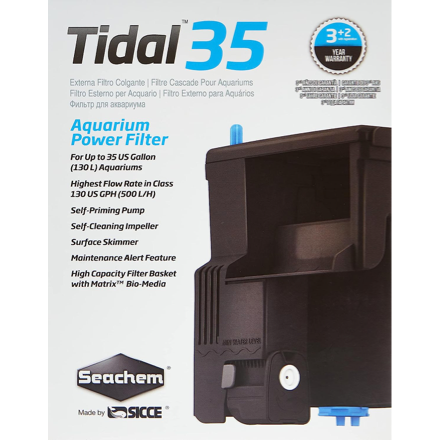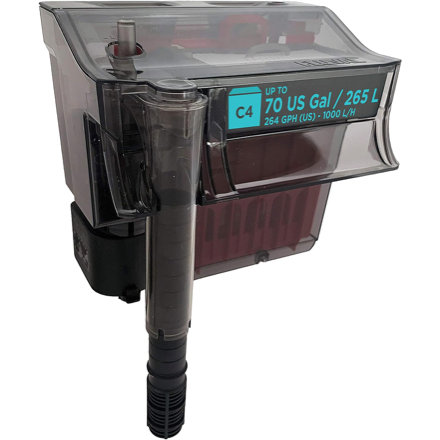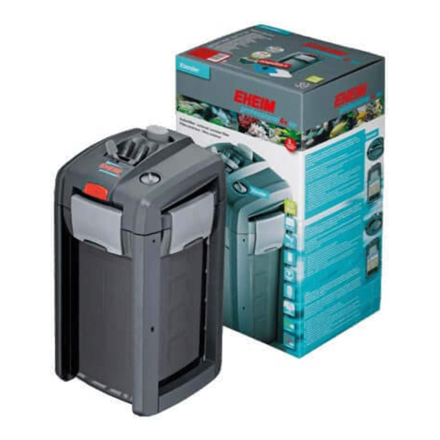In our previous blog post, I’ve written about the different types of filtration that occurs in our aquariums. If you haven’t read that blog post, I’d strong suggest you read it first.
Today, I’ll explain the different types of aquarium filters such as –
- Sponge filter
- Hang on back filter
- Canister filter
- Internal filter
- Live plants ❤
1. Sponge Filter
Sponge filters are nothing much but a piece of sponge connected with an air pump in the middle. They are the primitive version of the first aquarium filter. The way it works is –
- Air reaches to the center of the sponge filter via the air pump.
- Air creates bubbles and bubbles go up in the aquarium.
- As the bubbles going up, it pushes the water out of the sponge filter and creates a water movement inside the sponge.
- As some of the clean water moves out by the bubble, some of the dirty water will pass through the sponge.
a. Advantages of Using a Sponge Filter
- It is cheap.
- It has little to no mechanical parts that could corrode over time.
- Water movement is slow so that it doesn’t suck up the fish, fry or the shrimps you might keep.
- Bubbles rising from the sponge filter creates more than enough surface agitation that prevents oil film happening and promotes gas exchange.
b. Disadvantages of Using a Sponge Filter
- They take up too much space in the aquarium and they are not very good looking. This is the biggest drawback for us at aquariums0.
- There’s no place to add chemical filtration (e.g. activated carbon).
2. Hang-on-back Filter
We love hang-on-back filters! This is the very first filter that I purchased and I still use hang-on-back filters for the aquariums that I have at home. Just to note – I have 7 freshwater tanks at home, all different sizes. I use multiple hang-on-back filters or I pair it with a canister filter for bigger tanks.

Hang-on-back filters are the ones that hang to the rim of the aquarium – just as the name describes. They sit outside of the tank, water is sucked up (or pushed up) from the tank, passed through the filter media and returned back to tank with the help of gravity. It’s that easy! These filters usually have enough space to put bio balls or activated carbon before the water is returned to the tank for the biological and chemical filtration.
a. Advantages of Using a Hang-on-back Filter
- The filter stays outside of the aquarium so it doesn’t clutter the view, nor takes up the space from the fish.
- Easy to maintain since it’s not in the aquarium.
- Has enough space to put bio balls or activated carbon for biological and chemical filtration.
b. Disadvantages of Using a Hang-on-back Filter
- Depending on where the motor is located (in the water or up in the filter) you might need to make sure it doesn’t dry out.
- When the motor is inside of the aquarium, it’s less of a problem. I don’t think that the water of your aquarium will evaporate to that deeps to dry out the pump. Your pump will continuously push water to the filter from the aquarium.
- When the motor is up inside of the filter, you’ll need to fill the filter with water and run it, otherwise the pump will not be able to suck from the tank. You need to make sure it doesn’t dry out when the power goes out – which might become a hassle.
- Sound! The filter itself will run quietly but the returning water from filter to the tank will sound like a waterfall. You can increase the water levels of your aquarium to minimize the sound of the water, but it’ll still be in the background.
The hang-on-back filters that I use are from Oase, Fluval and Seachem👇🏿
3. Canister Filter
Canister filters are the most performant of the all the aquarium filters but it comes with a price tag. In fact, they are just plastic canisters that you can place anywhere. The water is sucked from the aquarium, passed through layers of filter media and pushed back to the aquarium via power heads (motors). It doesn’t take up any space in the aquarium or near the aquarium. All you will see is some hosing. Some fancy models even have built-in heater or UV sterilizers inside. I personally don’t think that nobody needs a canister filter unless they have a tank under heavy bio-load or they keep very special and demanding fish.
a. Advantages of Using a Canister Filter
- You can put any filter media inside the canister and you don’t see it anywhere near the aquarium so everything will be hidden from the view.
- Provides best of the best filtration (this may vary depending on the filter media).
- They are quiet. The power head (motor) is stuck inside the filter and it’s sealed shut – you will not hear any noise or sound of water at all.
b. Disadvantages of Using a Canister Filter
- They are expensive.
- They are hard to maintain. Exact opposite of the hang-on-back filters. Everything is closed shut inside of the canister and you need to pull apart everything and assemble from scratch every time you do a maintenance.
I have one canister filter from Eheim at home and it does the job pretty well.
4. Live plants
This should not come as a surprise to you – we love live plans!
Live plants makes the best biological filter (and we also listed them as a clean-up crew if you haven’t seen that). They absorbe the nitrates from the water and use that as fertilizers to grow while the bacteria breaks down the ammonia from the fish poop. This is called aquarium nitrogen cycle and the live plants play an important role in this cycle.

a. Advantages of Using Live Plants
- They are best in class biological filters.
- They add oxygen to the water through photosynthesis.
- They remove carbon dioxide from the water.
- They clarify the water.
- They help increase the bacteria population in the aquarium by providing them a “home”.
b. Disadvantages of Using Live Plants
- None 😉
If you’re about to purchase aquarium filters, I suggest you read the blog post about the filtration systems and the nitrogen cycle if you haven’t already.



